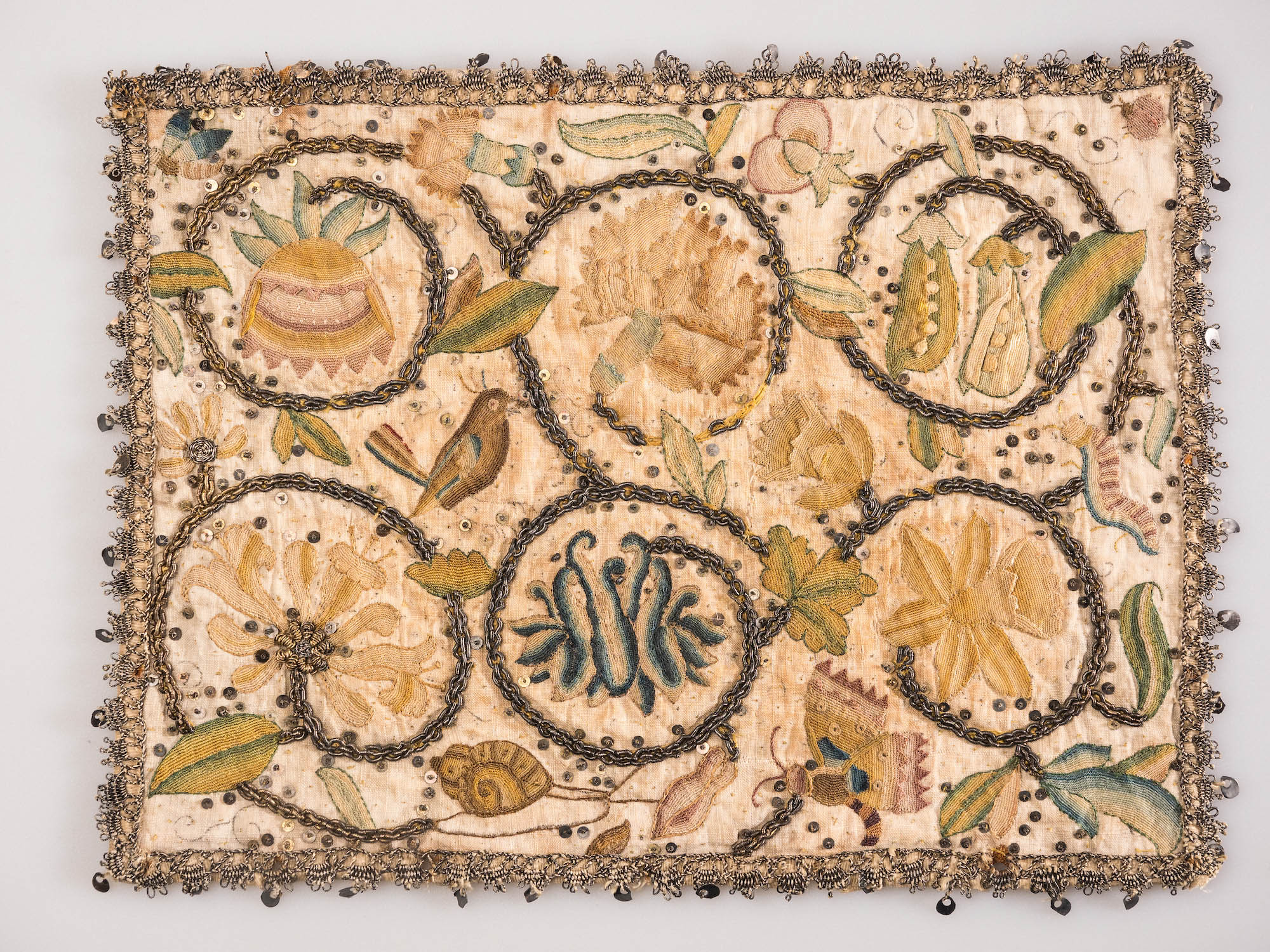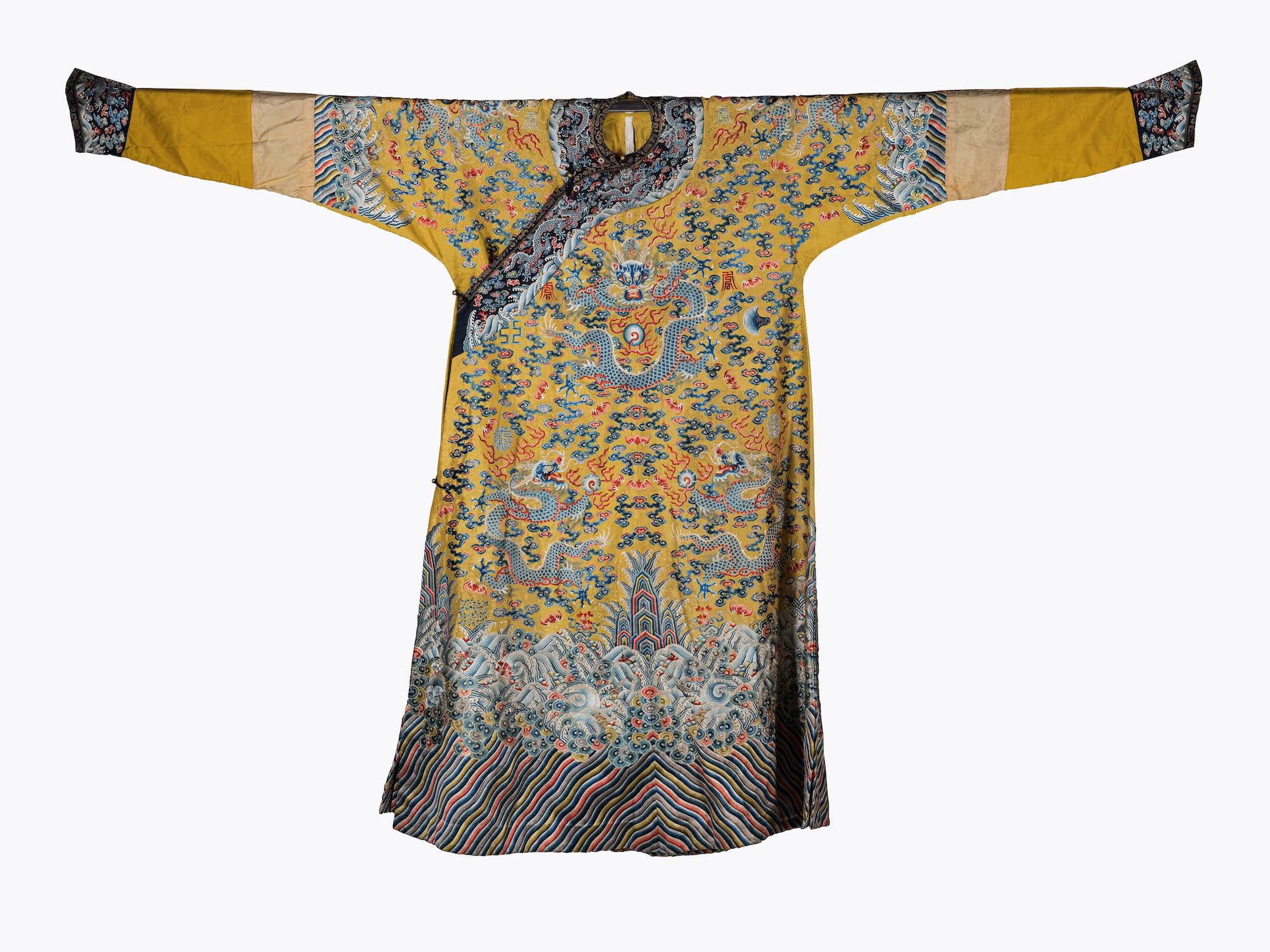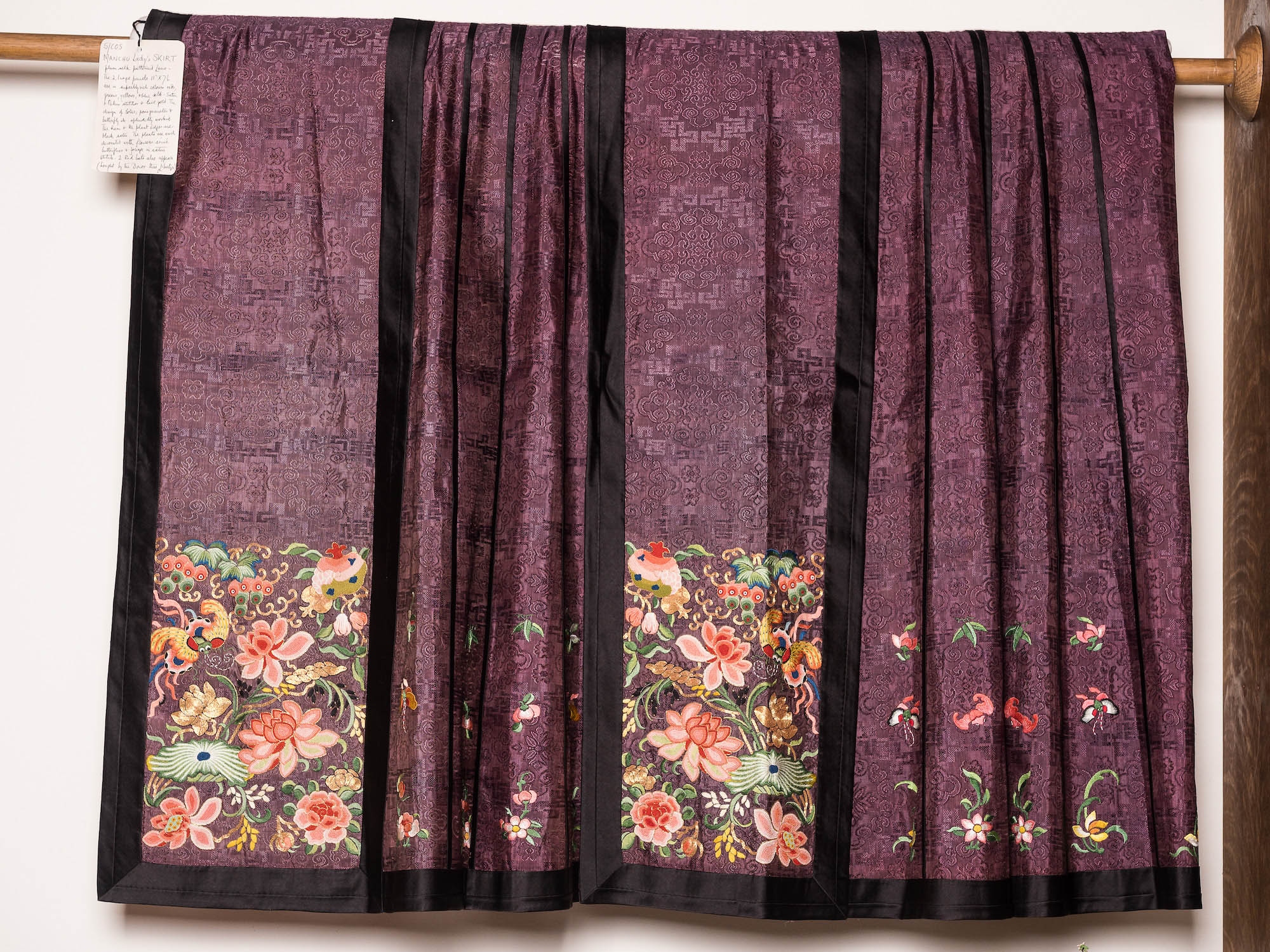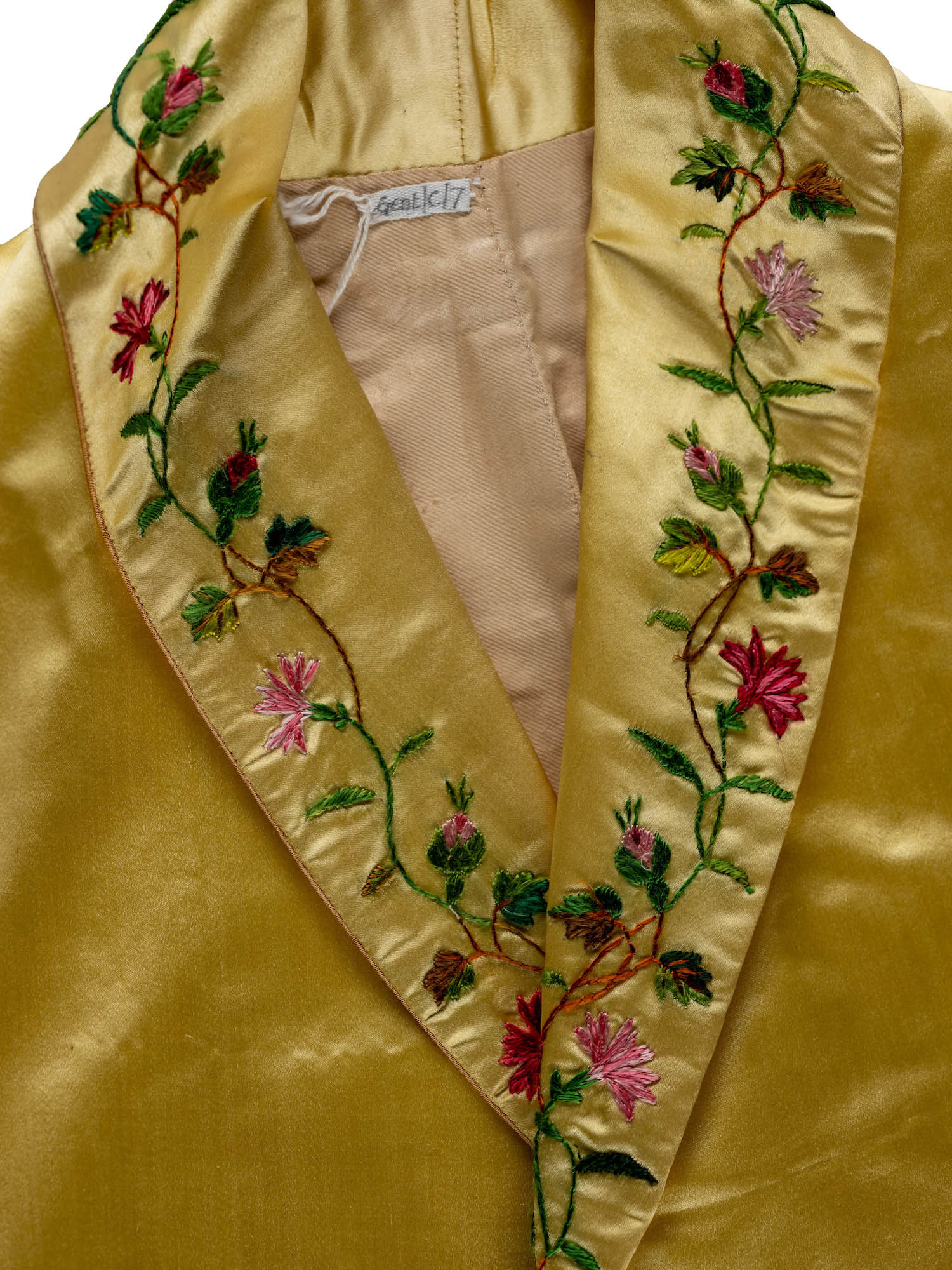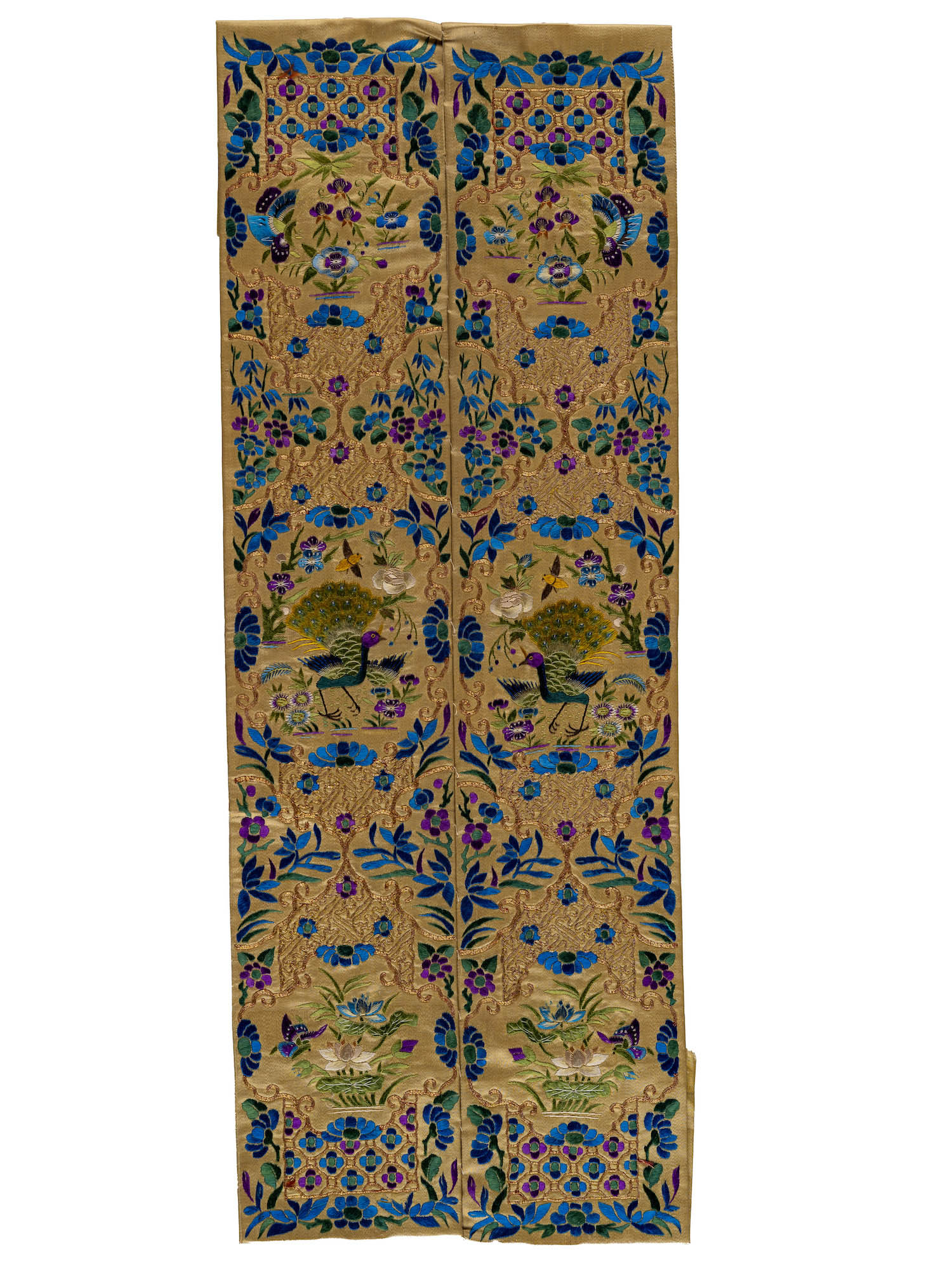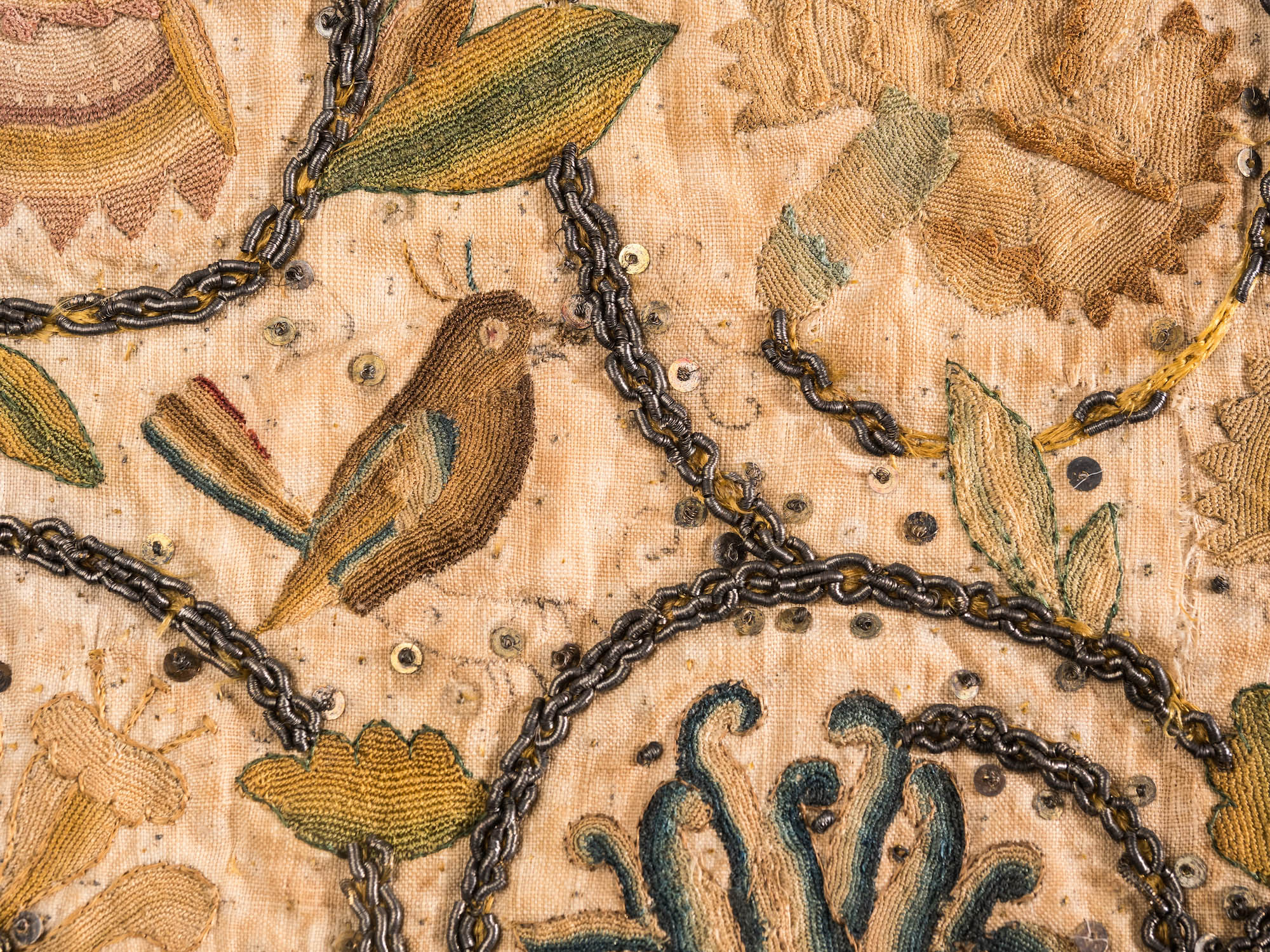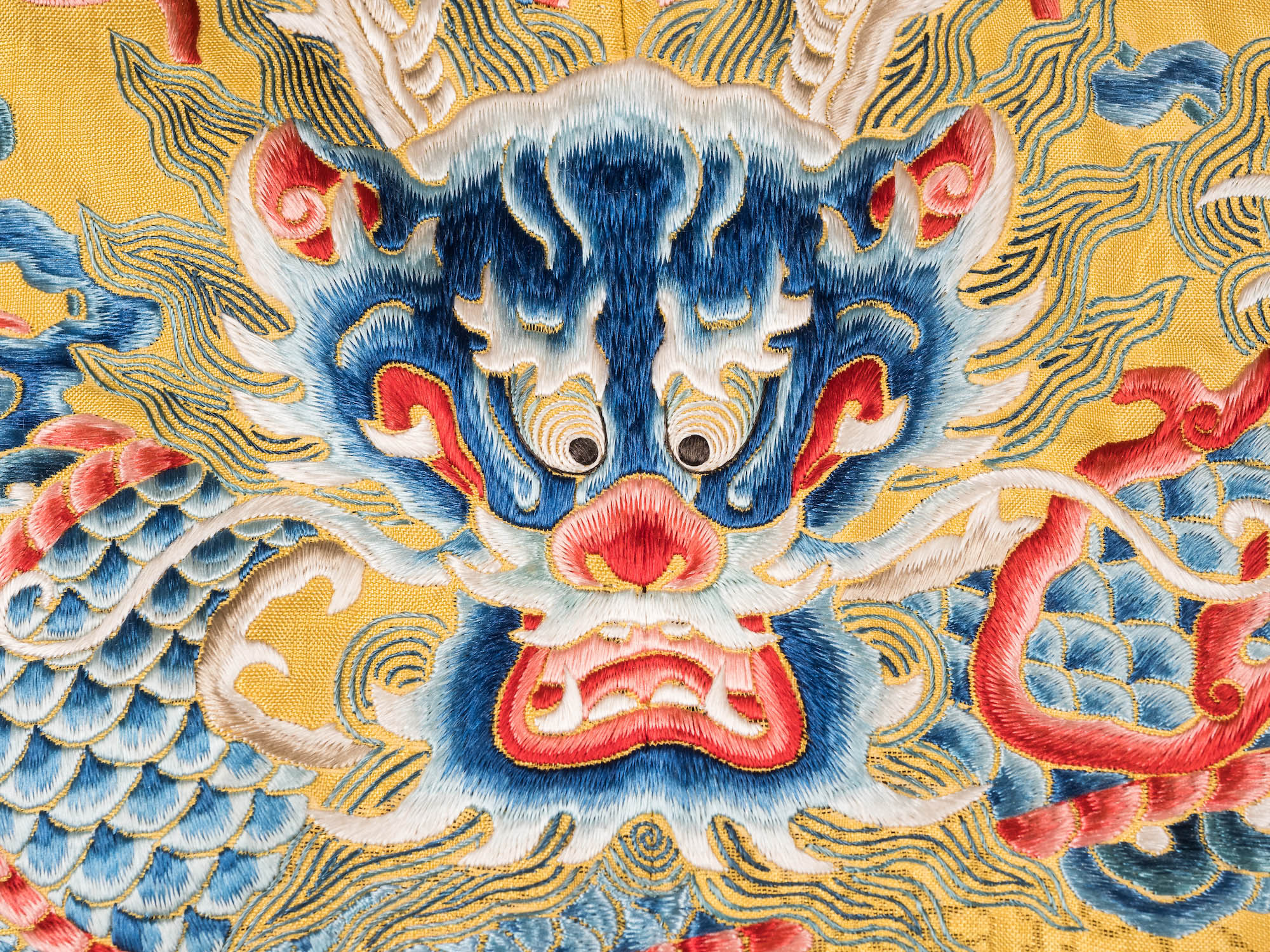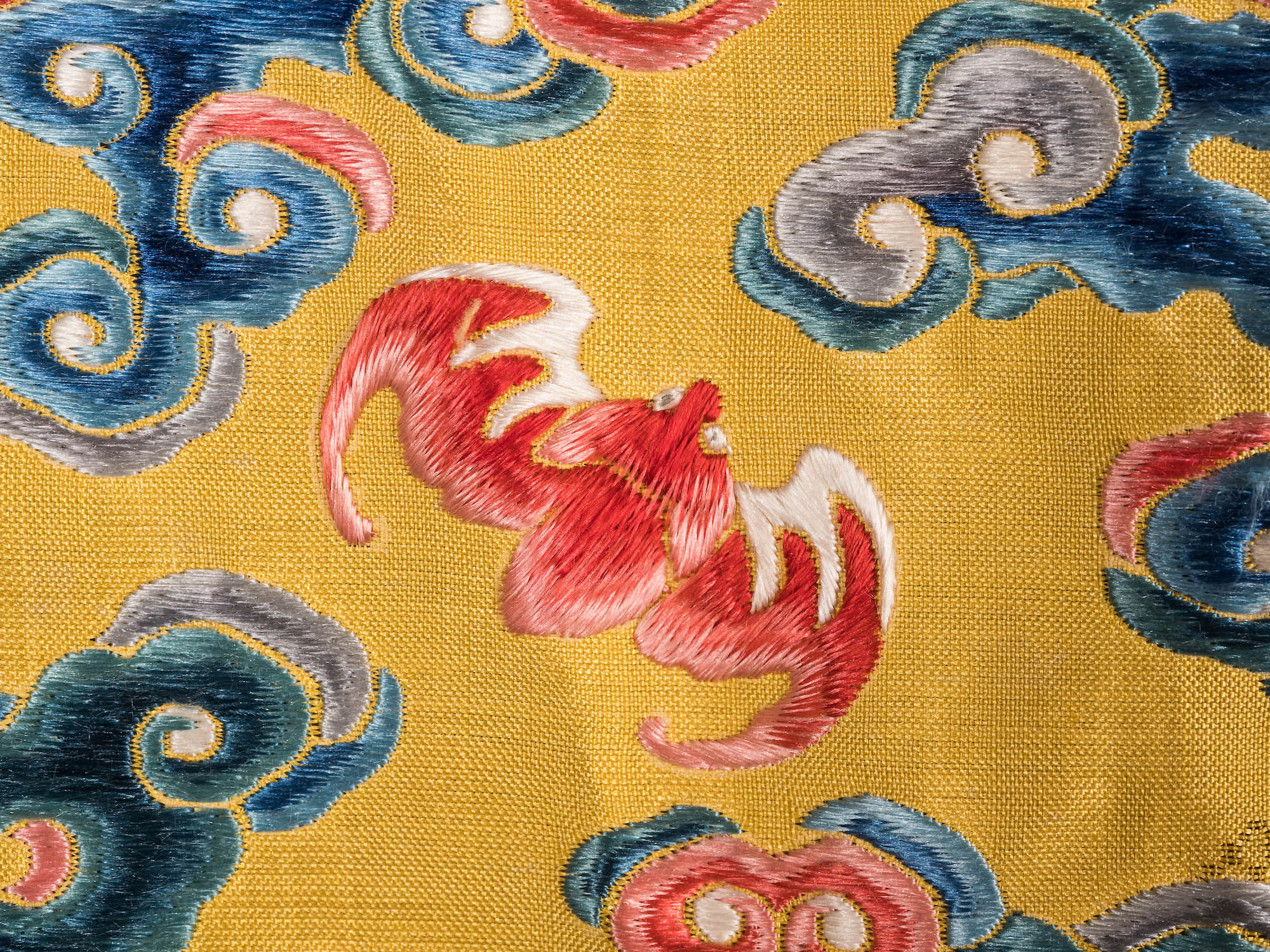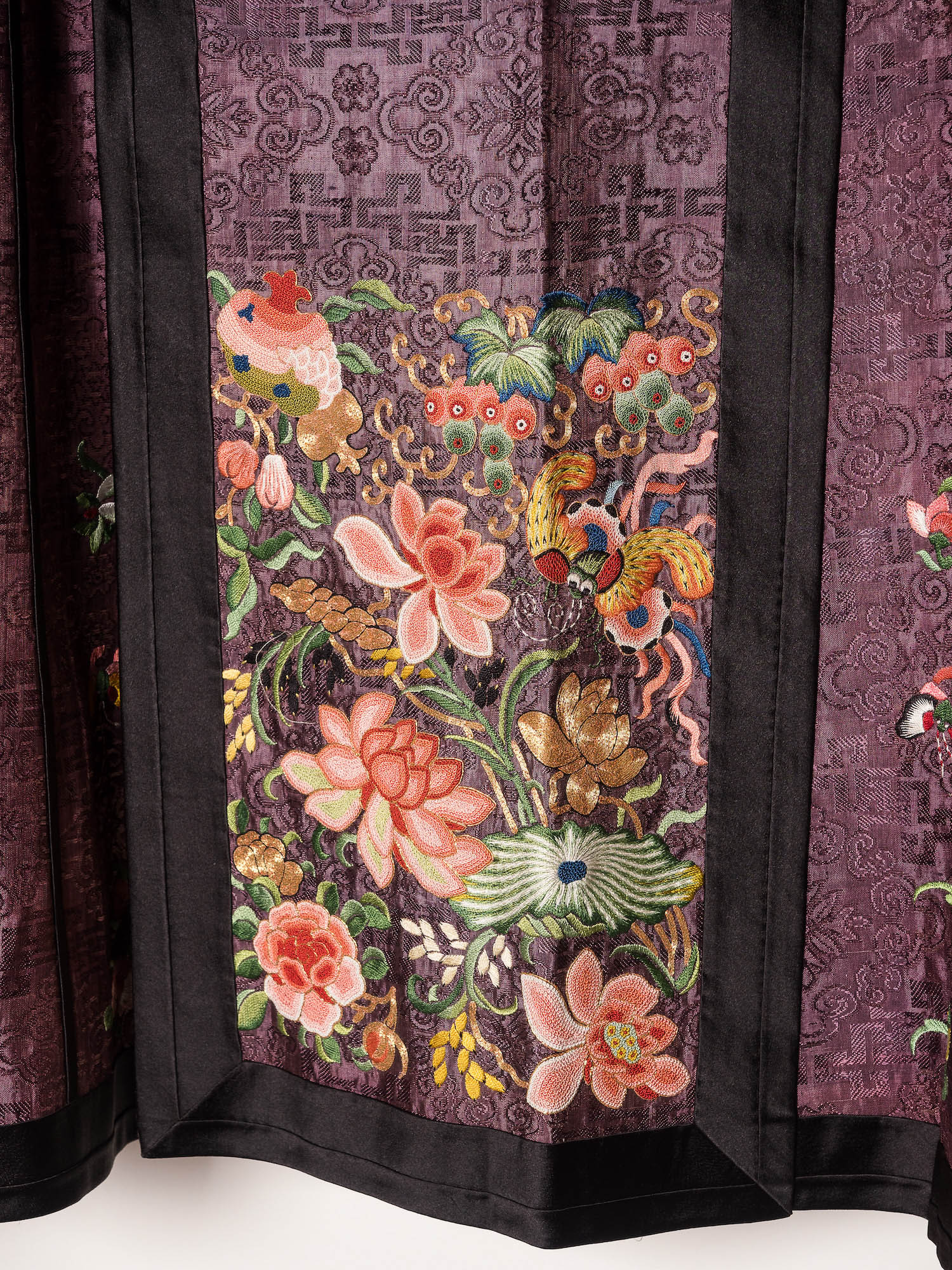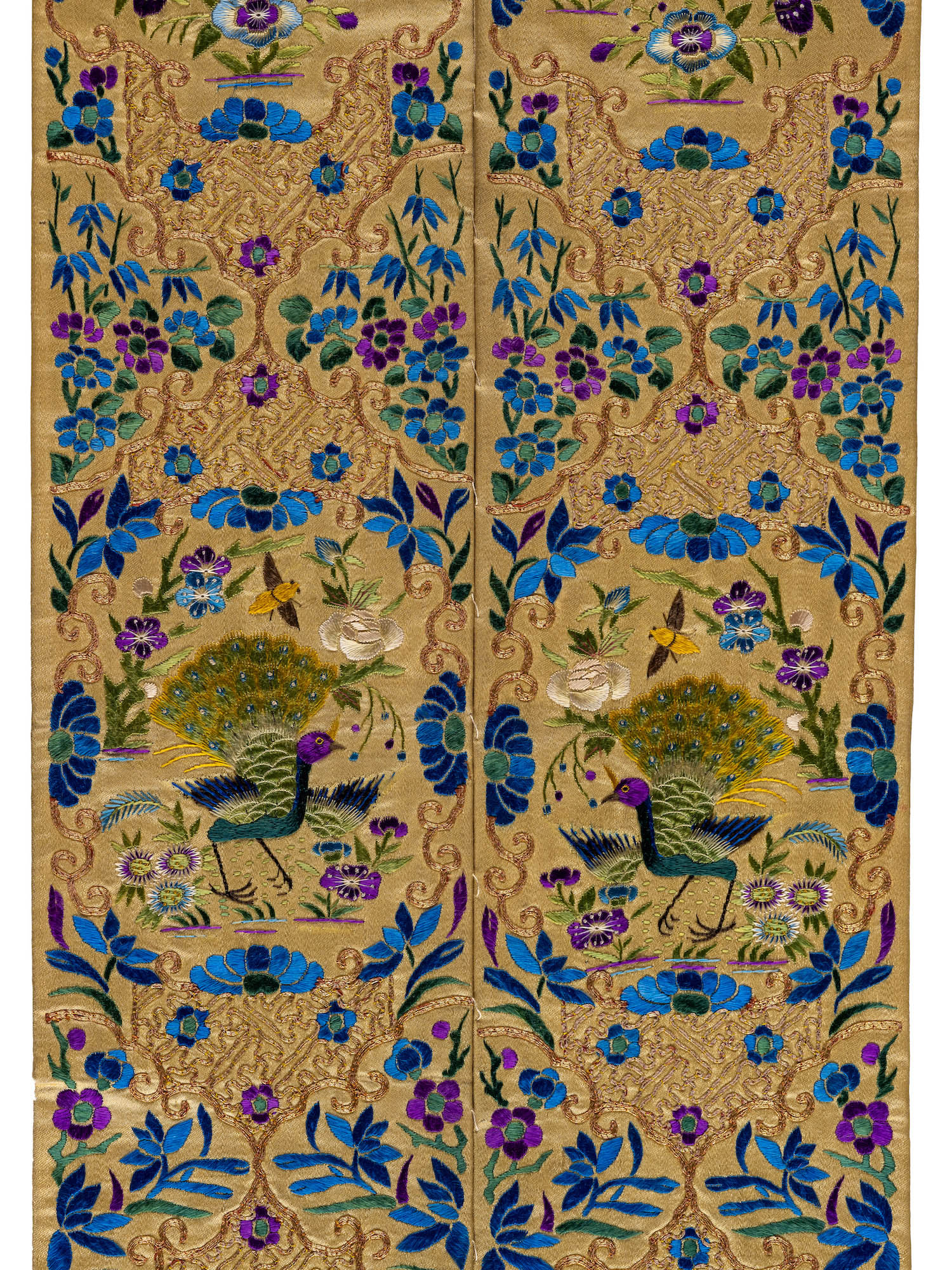#1 SINOPHILIA
The Qing dynasty came to power in China in 1644, and lasted until the Revolution of 1911 overthrew the imperial dynasty. During this time, China was ruled by the Manchu people, a nomadic ethnic minority that came from the north. Much of what we understand today as Chinese material culture developed during this period, including clothing, which also drew on previous Ming dynasty’s (Han Chinese) features and symbolism.
Chinese tea, silk and porcelain were incredibly desirable in Europe from at least the dawn of the Qing dynasty in the 17th century. Chinese design has inspired European fashion for centuries, in an obsession which the design historian Dr Sarah Cheang calls sinophilia. Many of the pieces in the Gawthorpe collection speak to the vast histories of interconnection between these two areas.
